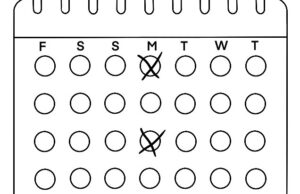Impractical expenses make the IB mission an empty promise

“The International Baccalaureate® aims to develop inquiring, knowledgeable and caring young people who help to create a better and more peaceful world through intercultural understanding and respect,” the IB mission statement reads. So far, so good. What can go wrong with “inquiring, knowledgeable and caring” students working towards bettering and creating a more inclusive and connected world? “To this end the organization works with schools, governments and international organizations to develop challenging programmes of international education and rigorous assessment,” it continues. This is where IB gets a little delusional.
IB strives to connect students all around the world with the same curriculum and teaching style. But the programs are inherently geared towards wealthy communities with a strong academic base to start. The so-called “challenging programmes” and “rigorous assessments” are tedious and unattainable for those who do not have access to the same types of resources our school provides.
Establishing IB at a school is a huge production in and of itself. Teacher training, workshops, conferences and fees are unrealistic for schools in developing countries or struggling communities. These schools do not have the resources to allot teachers specifically to teach IB or spend their summer and breaks mastering the program. Schools are sometimes strained for teachers as it is. The expense and effort to start the program at a school is too much for many schools already.
The IB syllabus is never concise. Without fail, IB chooses the most confusing route to explain every assignment. Understanding this syllabus is a hurdle that schools with a large number of English language learners or inexperienced teachers cannot overcome. And that just worsens the discrepancy between first-world countries and the developing world. The curriculum is set up so schools with better resources, better teachers and already rigorous academics will succeed with a higher frequency. In fact, it highlights the socioeconomic and political differences ironically IB tries to bridge. When you place the same assignments from two drastically different socioeconomic areas, inevitably the one from the more wealthy area will be more successful in its completion, which does nothing but exacerbate the gap between the developed and developing world.
Additionally, the Internal Assessments for IB, especially for science, require expensive equipment. Other classes require extensive access to the Internet and to technology that many schools cannot afford. While IB sometimes makes adjustments that recognize the financial strain, once again, it does nothing but highlight the issues. IB strives to even the playing field, but the way they choose to do so is by creating unrealistic and expensive assignments. Increasing the financial burden is the opposite of providing equal learning opportunities, and instead recognizes the international differences. Antithetically to their mission, IB puts students with less access and exposure at a disadvantage from the get go.
And the biggest, most conspicuous financial problem of all is the testing fees. IB tests cost an exorbitant amount. Registering the first time costs upwards of $300. How does charging students amounts that only a few can pay translate to “develop(ing) inquiring, knowledgeable and caring young people?” It does not.
Simply put, IB tries to provide opportunities to everyone, but the opportunities are only accessible for a wealthy few. The IB ideal of wordly, intelligent students is just that– an ideal. In order to transform the ideal into a reality, IB needs to make some changes, starting with the costly projects and exam fees. To truly be effective, IB needs to start building intercultural bridges– not just talk about building them.



1 Comment